Rose Bush Thorn Prick Infection: Understanding Sporotrichosis and Its Treatment
What is sporotrichosis. How is it caused. What are the symptoms of sporotrichosis. When should you seek medical care for this fungal infection. How is sporotrichosis diagnosed and treated. Can sporotrichosis be prevented.
What Is Sporotrichosis and How Does It Occur?
Sporotrichosis is a fungal infection of the skin caused by Sporothrix schenckii. This fungus is more closely related to mold and yeast than to bacteria. It’s commonly found in organic matter such as rose thorns, hay, sphagnum moss, twigs, and soil. The infection typically occurs when fungal spores enter the skin through punctures or small cuts, often from rose thorns or other sharp plant materials.
Who is at risk for sporotrichosis? Gardeners, nursery workers, and farmers who frequently handle roses, moss, hay, and soil are more susceptible to this infection. While it primarily affects the skin, in rare cases, the fungus can be inhaled or ingested, leading to infections in other parts of the body.

Recognizing the Symptoms of Sporotrichosis
The initial symptom of sporotrichosis is usually a firm, painless or mildly tender bump (nodule) on the skin. This nodule can range in color from pink to nearly purple. As the infection progresses, the nodule may develop into an open sore (ulcer) that drains clear fluid. If left untreated, these lesions can become chronic and persist for years.
In approximately 60% of cases, the fungus spreads along the lymph nodes. This results in new nodules and ulcers appearing in a line up the infected arm or leg. In rare instances, particularly in individuals with weakened immune systems, the infection can spread to other parts of the body, including bones, joints, lungs, and brain.
Can sporotrichosis spread from person to person?
Sporotrichosis is not known to be transmitted directly from person to person. However, in rare cases, cats or armadillos can transmit the disease to humans.
When to Seek Medical Care for Sporotrichosis
If you suspect you have sporotrichosis, it’s crucial to consult a doctor for proper diagnosis and treatment. While skin and lymph node infections are generally not life-threatening, they can lead to complications if left untreated. Seek immediate medical attention if you notice:

- New sores developing
- Existing sores appearing to grow
- A rapidly expanding area of redness, pain, and warmth around the original ulcers (which may indicate a bacterial infection called cellulitis)
Diagnosis and Testing for Sporotrichosis
Diagnosing sporotrichosis typically involves a biopsy of one of the nodules, followed by microscopic examination to identify the fungus. This is crucial because other infections can mimic sporotrichosis symptoms. Differential diagnoses may include:
- Bacteria related to tuberculosis or leprosy
- Cowpox
- Herpes
- Other fungi and bacteria
- Non-infectious diseases such as lupus
Treatment Options for Sporotrichosis
The treatment for sporotrichosis varies depending on the site of infection and its severity. Here are the main approaches:
Skin Infections
For infections limited to the skin, traditional treatment involves:
- Supersaturated potassium iodide solution: Administered three times daily for three to six months until all lesions have healed.
- Itraconazole (Sporanox): An antifungal medication taken for up to six months.
- Heat therapy: Applying a pocket warmer for one to two hours daily can create higher tissue temperatures, inhibiting fungal growth and allowing the immune system to combat the infection more effectively.
Bone and Joint Infections
These infections are more challenging to treat and rarely respond to potassium iodide. Treatment options include:

- Itraconazole (Sporanox): Used as an initial medication for several months or up to a year.
- Amphotericin: Administered intravenously, this drug may be necessary for severe cases but can have more side effects.
- Surgery: In some cases, removal of infected bone may be required.
Lung Infections
Sporotrichosis in the lungs is treated with a combination of:
- Amphotericin
- Itraconazole (Sporanox)
- Potassium iodide
In severe cases, surgical removal of infected lung tissue may be necessary.
Brain Infections
Sporotrichosis meningitis is rare, but treatment typically involves:
- Amphotericin plus 5-fluorocytosine
- Itraconazole (Sporanox) as an alternative option
Follow-up Care and Prognosis for Sporotrichosis
Patients with sporotrichosis require multiple follow-up visits to ensure the infection is resolving. Once the disease has cleared, further follow-up care is generally not needed. With proper treatment, the prognosis for most cases of sporotrichosis is good, especially for skin infections.
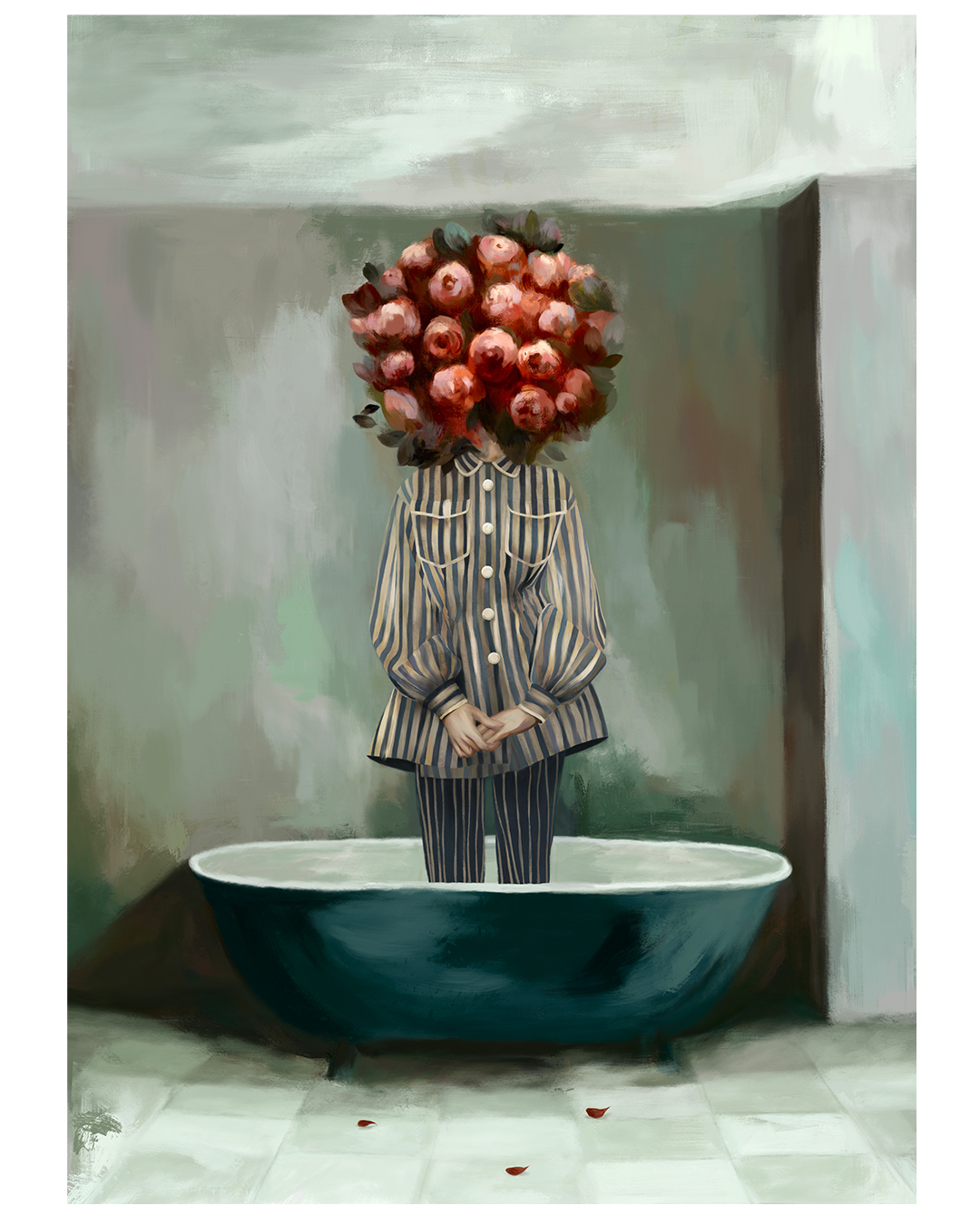
Preventing Sporotrichosis: Essential Precautions
While sporotrichosis can be effectively treated, prevention is always preferable. Here are some key steps to reduce your risk of infection:
- Wear protective clothing: When working with plants, soil, or other organic materials, wear long sleeves, pants, and gloves to minimize skin exposure.
- Practice good hygiene: Wash your hands thoroughly after handling plants or soil, especially before eating or touching your face.
- Handle plants carefully: Be cautious when handling rose bushes, thorny plants, or moss to avoid punctures or cuts.
- Keep wounds covered: If you have any cuts or scrapes on your skin, keep them clean and covered while working outdoors.
- Store garden materials properly: Keep hay, moss, and other organic materials in a dry, cool place to discourage fungal growth.
- Be aware of your environment: If you’re in an area known for sporotrichosis, take extra precautions and be vigilant for early signs of infection.
Sporotrichosis in Special Populations: Considerations and Risks
While sporotrichosis can affect anyone, certain groups may be at higher risk or require special consideration:

Immunocompromised Individuals
People with weakened immune systems, such as those with HIV/AIDS, undergoing chemotherapy, or taking immunosuppressive medications, are at higher risk for severe or disseminated sporotrichosis. They may require more aggressive treatment and closer monitoring.
Pregnant Women
Pregnant women should exercise caution, as some antifungal medications used to treat sporotrichosis may not be safe during pregnancy. If infection occurs, treatment should be carefully managed under close medical supervision.
Children
While sporotrichosis is less common in children, they can still be affected, especially if they play outdoors frequently. Parents should teach children about safe gardening practices and supervise their outdoor activities.
Occupational Risk Groups
Certain professions carry a higher risk of sporotrichosis exposure:
- Florists and rose gardeners
- Forestry workers
- Landscapers
- Farmers, especially those handling hay or moss
- Miners
- Wildlife workers, particularly those handling armadillos
These individuals should be especially vigilant about protective measures and early recognition of symptoms.

Emerging Research and Future Directions in Sporotrichosis Management
As medical science advances, new approaches to diagnosing and treating sporotrichosis are being explored:
Improved Diagnostic Techniques
Researchers are working on developing more rapid and accurate diagnostic tests for sporotrichosis. These may include:
- Molecular techniques like PCR (Polymerase Chain Reaction) for faster identification of the Sporothrix fungus
- Serological tests to detect antibodies against the fungus
- Advanced imaging techniques for detecting disseminated infections
Novel Treatment Approaches
Current research is focusing on new treatment strategies, including:
- Development of new antifungal agents with improved efficacy and fewer side effects
- Combination therapies that may enhance treatment outcomes
- Immunotherapy approaches to boost the body’s natural defenses against the fungus
- Topical treatments for cutaneous sporotrichosis that could reduce the need for systemic medications
Vaccine Development
While currently not available, research into potential vaccines against Sporothrix schenckii is ongoing. A successful vaccine could provide significant protection for high-risk individuals.
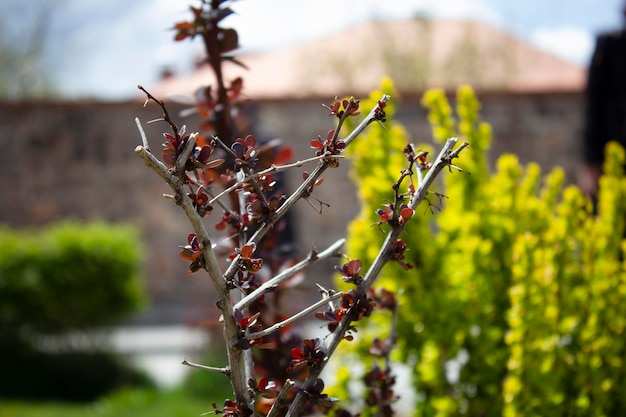
Environmental Control Strategies
Scientists are also investigating ways to control the fungus in its natural habitats, which could lead to more effective prevention strategies, especially in areas where sporotrichosis is endemic.
Global Impact and Epidemiology of Sporotrichosis
Sporotrichosis occurs worldwide but is more prevalent in certain regions:
Geographic Distribution
The infection is found globally but is particularly common in:
- South America, especially Brazil and Peru
- Mexico
- Central America
- South Africa
- India
- Japan
In the United States, it’s more frequently reported in the Midwest and Southern states.
Changing Patterns
Recent years have seen changing patterns in sporotrichosis epidemiology:
- Increased cases of zoonotic transmission, particularly from cats in Brazil
- Emergence of new Sporothrix species causing human infections
- Rising incidence in some areas due to environmental changes and human activities
Economic Impact
Sporotrichosis can have significant economic implications:

- Healthcare costs for diagnosis and treatment
- Lost productivity due to illness and recovery time
- Impact on industries such as floriculture and forestry in endemic areas
Understanding these global patterns and impacts is crucial for developing effective public health strategies and allocating resources for research and treatment.
Living with Sporotrichosis: Patient Experiences and Quality of Life
While sporotrichosis is generally treatable, it can significantly impact a person’s quality of life, especially in chronic or severe cases. Understanding these impacts is crucial for comprehensive patient care:
Physical Challenges
Patients with sporotrichosis may experience:
- Discomfort or pain from skin lesions
- Limited mobility if lesions occur on joints or limbs
- Side effects from long-term medication use
- In severe cases, systemic symptoms affecting overall health
Psychological Impact
The disease can also affect mental health:
- Anxiety about the spread of infection or treatment effectiveness
- Depression, especially in chronic cases
- Self-consciousness about visible skin lesions
- Stress related to lifestyle changes or occupational restrictions
Social and Occupational Effects
Sporotrichosis can impact daily life and work:
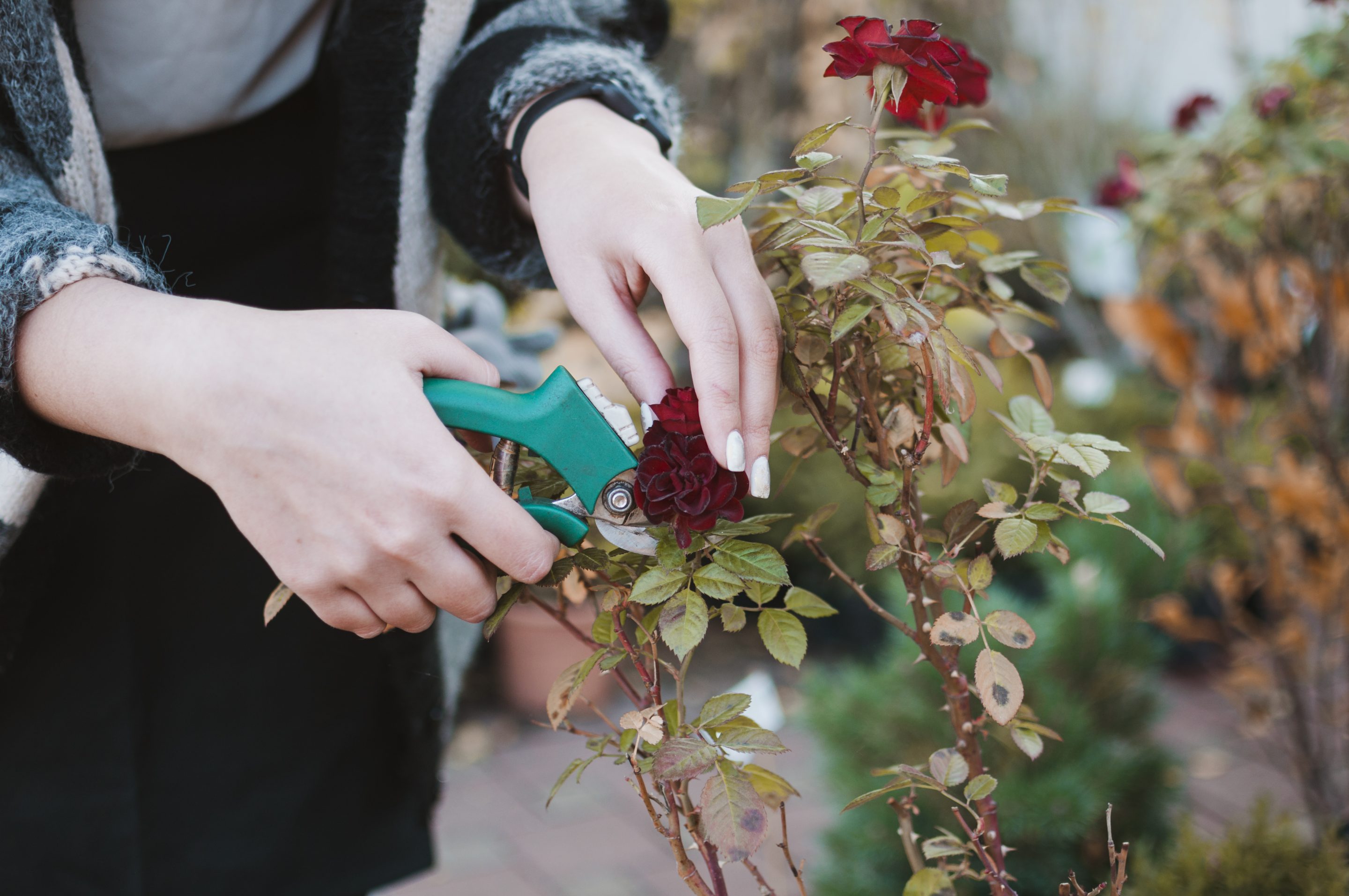
- Need for time off work for treatment and recovery
- Potential career changes for those in high-risk occupations
- Social isolation due to misconceptions about the disease’s contagiousness
Coping Strategies
Patients can employ various strategies to manage life with sporotrichosis:
- Joining support groups or online communities for shared experiences
- Engaging in stress-reduction techniques like meditation or yoga
- Working with occupational therapists to adapt work practices
- Seeking psychological support when needed
Long-term Outlook
With proper treatment and management, most patients with sporotrichosis can expect:
- Complete resolution of skin lesions
- Return to normal activities and work
- Minimal long-term health effects, especially in cutaneous cases
However, some patients, particularly those with disseminated infections, may require ongoing medical care and lifestyle adjustments.
Understanding these aspects of living with sporotrichosis is crucial for healthcare providers to offer comprehensive care that addresses not just the physical symptoms, but also the overall well-being of patients affected by this fungal infection.
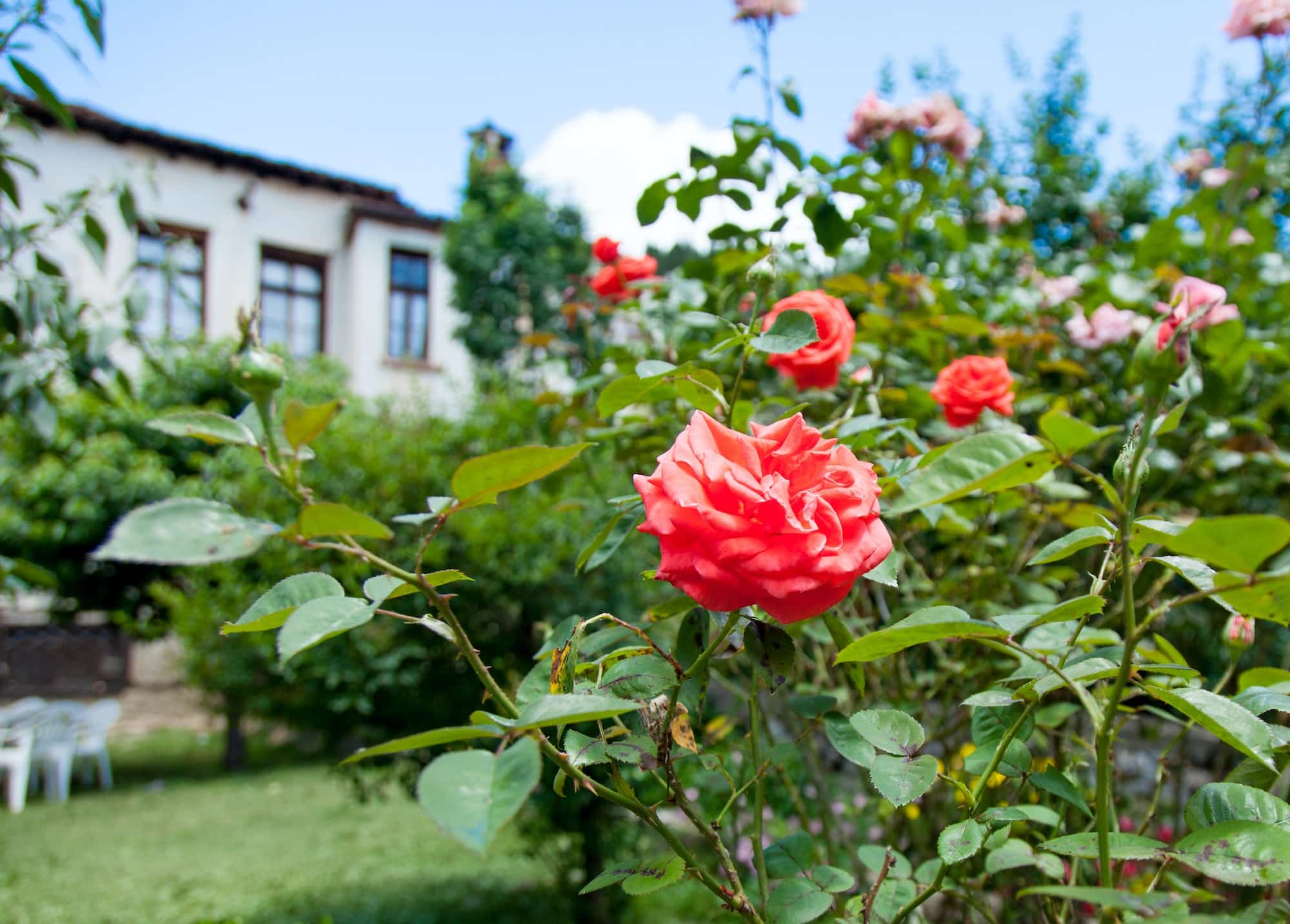
Sporotrichosis Basics
Written by WebMD Editorial Contributors
- Sporotrichosis Overview
- Causes of Sporotrichosis
- Symptoms of Sporotrichosis
- When to Seek Medical Care for Sporotrichosis
- Exams and Tests for Sporotrichosis
- Sporotrichosis Care at Home
- Medical Treatment for Sporotrichosis
- Follow-up Care for Sporotrichosis
- Sporotrichosis Prevention
- Outlook for Sporotrichosis
- More
Sporotrichosis is an infection of the skin caused by a fungus, Sporothrix schenckii. This fungus is related more closely to the mold on stale bread or the yeast used to brew beer than to bacteria that usually cause infections. The mold is found on rose thorns, hay, sphagnum moss, twigs, and soil. The infection is more common among gardeners, nursery workers, and farmers who work with roses, moss, hay, and soil.
Once the mold spores move into the skin, the disease takes days or even months to develop.
Sporotrichosis usually begins when mold spores are forced under the skin by a rose thorn or sharp stick, although the infection can begin in apparently unbroken skin after contact with hay or moss carrying the mold.
More rarely, cats or armadillos can transmit the disease.
In rare cases, the fungus can be inhaled or ingested, causing infection in parts of the body other than the skin.
Sporotrichosis does not appear to be transmitted from person to person.
The first symptom of sporotrichosis is a firm bump (nodule) on the skin that can range in color from pink to nearly purple. The nodule is usually painless or only mildly tender. Over time, the nodule may develop an open sore (ulcer) that may drain clear fluid. Untreated, the nodule and the ulcer become chronic and may remain unchanged for years.
In about 60% of cases, the mold spreads along the lymph nodes. Over time, new nodules and ulcers spread in a line up the infected arm or leg. These can also last for years.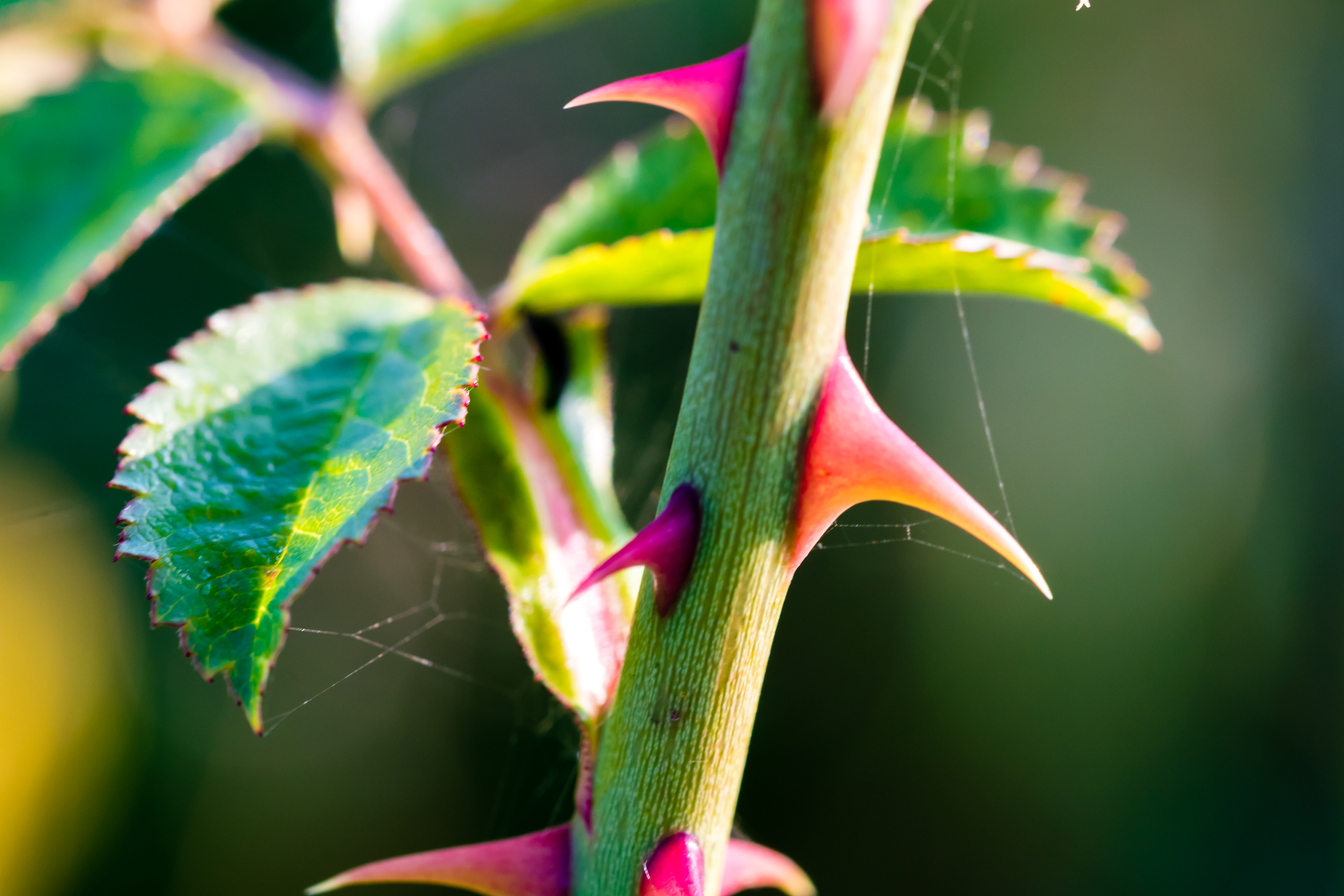
In very rare cases, the infection can spread to other parts of the body, such as the bones, joints, lungs, and brain. This is more common among those with a weakened immune system. It can be difficult to treat and may be life threatening.
When to call the doctor
- If you think you might have sporotrichosis, see a doctor about diagnosis and treatment.
- If you are already being treated for sporotrichosis, contact a doctor if new sores develop or if the old ones appear to be growing.
When to go to the hospital
- Sporotrichosis in the skin or lymph nodes should not be dangerous or life threatening.
- Open ulcers can become infected with bacteria and may cause a condition known as cellulitis.
- If a rapidly expanding area of redness, pain, and warmth around the original ulcers develops, you should go to your local emergency room.
Other infections can mimic sporotrichosis, so a doctor performs tests to confirm the diagnosis. The tests for sporotrichosis usually involve a biopsy of one of the nodules, followed by an exam of the biopsy sample under a microscope to identify the mold. Other possible infections might include:
The tests for sporotrichosis usually involve a biopsy of one of the nodules, followed by an exam of the biopsy sample under a microscope to identify the mold. Other possible infections might include:
- Bacteria related to tuberculosis or leprosy
- Cowpox
- Herpes
- Other fungi and bacteria
- Noninfectious diseases such as lupus
No effective home care for sporotrichosis is known. Ulcers should be kept clean and covered until they are healed.
Treatment of sporotrichosis depends on the site infected.
- Infections in the skin only: These sporotrichosis infections have traditionally been treated with a supersaturated potassium iodide solution. This medicine is given three times per day for three to six months until all the lesions have gone away. Skin infections may also be treated with itraconazole (Sporanox) for up to six months. Also, heat therapy (pocket warmer for one- two hours daily) creates higher tissue temperature to inhibit fungus growth, allowing the immune system to fight the fungus.

- Sporotrichosis infection in the bones and joints: These infections are much more difficult to treat and rarely respond to potassium iodide. Itraconazole (Sporanox) is often used as an initial medication for several months or even up to a year. Amphotericin is also used, but this drug can only be given through an IV. Amphotericin has more side effects and may need to be administered for many months. Surgery is sometimes needed to remove infected bone.
- Infection in the lungs: Lung infections are treated with amphotericin,itraconazole (Sporanox), and potassium iodide with varying amounts of success. Sometimes, the infected areas of the lung have to be removed.
- Infection in the brain: Sporotrichosis meningitis is rare, so information on treatment is not readily available. Amphotericin plus 5-fluorocytosine is generally recommended, but itraconazole (Sporanox) might also be tried.
Multiple follow-up visits may be needed with a doctor to make sure sporotrichosis is disappearing. Once the disease goes away, further follow-up care is generally not needed.
Once the disease goes away, further follow-up care is generally not needed.
The most important step in preventing sporotrichosis is preventing mold spores from entering the skin.
People who work with roses, hay, or sphagnum moss should cover any scratches or breaks in their skin. They should also wear heavy boots and gloves to prevent puncture wounds.
Most people who have sporotrichosis only in their skin or lymph nodes make a full recovery.
Treating a sporotrichosis infection may take several months or years, and scars may remain at the site of the original infection.
Infections involving the brain, lungs, joints, or other areas of the body are much more difficult to treat.
Top Picks
A Risk for Bacterial and Fungal Infection
The beautiful rose flower tops a green stem that has sharp outgrowths. Many people refer to these as thorns.
Many people refer to these as thorns.
If you’re a botanist, you might call these sharp outgrowths prickles, as they’re part of the outer layer of the plant’s stem. They don’t meet the strict definition of thorns, which have deeper roots in a plant’s stem.
No matter what you call them, rose thorns are sharp enough to penetrate your skin and have the ability to pass infectious material into the wound, such as:
- dirt
- fertilizer
- bacteria
- fungi
- garden chemicals
These substances delivered into the skin by a thorn could result in a number of diseases, including:
- sporotrichosis
- plant-thorn synovitis
- mycetoma
Read on to learn the symptoms to watch for and how to treat infections from rose thorns.
Also known as rose gardener’s disease, rose picker’s disease is the common name of sporotrichosis.
Sporotrichosis is a relatively rare infection caused by the fungus Sporothrix. It occurs when the fungus gets into the skin via a small cut, scrape, or puncture, such as from a rose thorn.
It occurs when the fungus gets into the skin via a small cut, scrape, or puncture, such as from a rose thorn.
The most common form, cutaneous sporotrichosis, is often found on the hand and arm of someone who has been handling contaminated plant materials.
The symptoms of cutaneous sporotrichosis usually start to appear between 1 and 12 weeks after infection. The progression of symptoms is typically the following:
- A small and painless pink, red, or purple bump forms where the fungus entered the skin.
- The bump get bigger and starts to look like an open sore.
- More bumps or sores might appear in the near vicinity of the original bump.
Treatment
It’s likely your doctor will prescribe a several-month course of antifungal medication, such as itraconazole.
If you have a severe form of sporotrichosis, you doctor might start your treatment with an intravenous dose of amphotericin B followed by an antifungal medication for at least a year.
Plant-thorn synovitis is a rare cause of arthritis from a plant thorn penetrating a joint. This penetration causes inflammation of the synovial membrane. That’s the connective tissue that lines a joint.
Although Blackthorn or date palm thorns cause most reported cases of plant-thorn synovitis, the thorns of numerous other plants can cause it too.
The knee is the most common joint affected, but it can also affect the hands, wrists, and ankles.
Treatment
Currently, the only cure for plant-thorn synovitis is the removal of the thorn through surgery known as synovectomy. In this surgery, the connective tissue of the joint is removed.
Mycetoma is a disease caused by fungi and bacteria found in water and soil.
Mycetoma occurs when these specific fungi or bacteria repeatedly enter the skin through a puncture, scrape, or cut.
The fungal form of the disease is called eumycetoma. The bacterial form of the disease is called actinomycetoma.
Although rare in the United States, it often develops in people who live in rural areas of Latin America, Africa, and Asia that are near the equator.
The symptoms of both eumycetoma and actinomycetoma are similar. The disease starts with a firm, painless bump under the skin.
Over time the mass grows larger and develops oozing sores, making the affected limb unusable. It can spread from the initially infected area to other parts of the body.
Treatment
Antibiotics can often effectively treat actinomycetoma.
Although eumycetoma is commonly treated with long-term antifungal medication, treatment may not cure the disease.
Surgery, including amputation, might be necessary to remove infected tissue.
Rose thorns can deliver bacteria and fungi into your skin and cause infection. To protect yourself while picking roses or gardening in general, wear protective clothing like gloves.
Gray rot on roses: signs, methods of control and prevention
- 1 Causes and signs of the disease
- 2 How to deal with the disease
- 3 Prevention of gray rot on roses
The rose is considered the queen of flowers, but she is not spared either. various plant diseases. Gray rot, a disease caused by the fungus Botrytis cinerea , can spoil the aesthetic appearance of the buds. If you miss her appearance and do not take appropriate measures, the rose bush will die first, then the entire rose garden. Knowing the signs of the disease, methods of dealing with it and methods of prevention is necessary in order to prevent possible troubles and not be left without roses.
various plant diseases. Gray rot, a disease caused by the fungus Botrytis cinerea , can spoil the aesthetic appearance of the buds. If you miss her appearance and do not take appropriate measures, the rose bush will die first, then the entire rose garden. Knowing the signs of the disease, methods of dealing with it and methods of prevention is necessary in order to prevent possible troubles and not be left without roses.
Causes and signs of the disease
Botrytis fungus can infect a wide variety of plants: strawberries, cabbage, grapes and many others. The list of his potential victims includes more than 200 items. Roses are included in this list.
They can become infected from other inhabitants of the garden or garden – the infection spreads through the air, it can be carried by insects on their paws. Often, infection occurs by contact: through garden tools, gardener’s clothes.
Most often, the disease overtakes young and weakened plants. The first to suffer are buds, leaves, then the fungus spreads to stems, pedicels. Gradually, the infection reaches the root system, the plant rots completely.
The first to suffer are buds, leaves, then the fungus spreads to stems, pedicels. Gradually, the infection reaches the root system, the plant rots completely.
The presence of the disease can be determined by the following signs:
- medium-sized brown spots with a small depression in the center, which gradually grow;
- a gray smoky coating that covers the plant in the affected areas about a week after the appearance of a brown spot – “fluffs” are fungal spores;
- black oval bodies in places of gray plaque are sclerotia, in this form the fungus “overwinters” on parts of the plant, in the soil.
Concomitant factors are high humidity, a sharp temperature drop. Rainy weather, excessive watering, foggy mornings, a large planting density that does not allow the soil to dry out quickly – such conditions are most favorable for the occurrence of gray rot.
The end of summer is the time when these factors are observed most often. It is at this time that roses usually fall ill.
If they leave untreated in the winter, the disease will begin to actively develop under cover and will have time to destroy the entire rose garden or a couple of rose bushes before spring.
Measures taken in time will allow you to save roses, and they will delight you with their beauty for a long time to come.
How to deal with the disease
Signs of gray mold on roses are so specific that it is almost impossible to confuse the disease with something else. Having discovered the disease, you need to immediately begin to fight it.
- Remove damaged plant parts first. It is better to capture areas with a “margin” in order to be sure that the fragments of rose bushes affected by the fungus are completely removed. It is necessary to dispose of the diseased parts of the plant correctly; it is impossible to leave them in the garden.
- Treat rose bushes with fungicides. It is advisable not only to spray, but also to water the plants with medicinal solutions.
 If necessary, the treatment will have to be repeated, guided by the instructions for the specific preparation.
If necessary, the treatment will have to be repeated, guided by the instructions for the specific preparation.
The following agents are used to combat gray mold on roses:
- “Fundazol”;
- “Phytodoctor”;
- “Gamair”;
- “Fitosporin-M”;
- “Euparen-multi”;
- Alirin-B;
- Switch.
From folk remedies, infusions of horsetail, garlic, mustard, solutions of potassium permanganate, laundry soap, and soda have proven themselves well. They are cheaper than specialized chemistry, but not as effective. It is advisable to use them for preventive, but not therapeutic purposes. Excessive savings can result in the fact that gray rot will destroy the entire rose garden and the losses will be more tangible than spending on the purchase of agrochemicals.
Prevention of gray rot on roses
If you want to save money, but keep your roses, you need to take preventive measures:
- Do not plant roses too often.

- Choose well-ventilated areas of the garden for the rose garden.
- Keep plants most susceptible to gray rot away from rose bushes. These plants include garden strawberries, grapes, cabbage, tomatoes.
- Feed your roses with a fertilizer containing manganese salts. This will make them more resistant to fungal diseases.
- Periodically treat plants with folk remedies or agrochemicals that have an antifungal effect. The processing mode depends on the selected medium. You will find this information on the packages with the drug. If you use folk remedies, treat rose bushes with them once every one to two weeks.
- Etch cuttings before rooting in solutions of “Maxim”, “Baktofit”, “Vitaros”.
- Do not use planting material that you are not sure about, that has visible damage.
- Discard dead plants promptly.
- Do not leave plant debris in the garden.
- Mulch with needles, nutshells, tree bark.
There are no varieties of roses that are absolutely resistant to gray mold. It is noticed that most often she suffers from flowers that have a light pink color.
It is noticed that most often she suffers from flowers that have a light pink color.
Roses, despite their thorns and all their splendor, are fragile and defenseless. They are threatened by various diseases, including gray rot. Its main symptom is a smoky coating formed by spores of the fungus. If adequate measures are not taken, the rose bush will die. The use of modern agricultural chemistry will help save the rose garden. Do not neglect preventive measures.
video and instruction for beginners
Most modern varieties of garden roses cannot tolerate too low temperatures. Therefore, with the approach of frost, the grower should think about how to prune roses for the winter and build a shelter for them. Practical advice from experienced gardeners and videos will help you understand all the intricacies of the process, avoid gross mistakes that lead to the death of even the most hardy varieties.
Complete pruning of shoots in autumn should not be done
Reason and timing of pruning roses
According to experienced gardeners, it is not advisable to do a full pruning of shoots in autumn for the following reasons:
- The procedure takes a lot of energy from the bush, it goes into the winter weakened.

- Roses can become infected through cuts.
- Plants that have not been pruned before winter grow green mass faster and form buds.
Infections penetrate into shoot tissues through cuts
Selective pruning is done in autumn, removing:
- old, diseased, withered shoots;
- Branches too long and stiff to interfere with cover;
- “wen” that did not have time to fully mature;
- buds with part of the shoot;
- leaves with petioles.
More information about preparing rose bushes for cold weather is described in the video.
If there are too many roses in the area, you can not completely remove all the foliage. It is enough to cut them only from the lower branches to provide better air access to the base. Only blackened leaf plates of diseased plants are subject to mandatory pruning. After the procedure, the foliage is completely removed from under the bush. It won’t work as a cover.
After the procedure, the foliage is completely removed from under the bush. It won’t work as a cover.
Leaves are removed from under the bush
Autumn pruning is carried out in the middle or end of October, when there will be no increase in temperature. If the green shoots are removed earlier, then at the first warming they will start to grow, and the plant will not have time to prepare for wintering.
To prevent infection, shortened shoots are treated at the cut points with garden pitch. Thin branches can be greased with brilliant green.
Prepared perennials are treated twice:
- immediately after trimming with a solution of ferrous sulfate (3%) or any other antifungal agent;
- 3% solution of Bordeaux mixture immediately before shelter.
Terms and options for sheltering roses
It is necessary to cover rose bushes for the winter in 2 stages.
- From mid-September to mid-October, the shoots bend down to the ground.
 After a cold snap, they will become rigid, during the procedure they may break or get damaged.
After a cold snap, they will become rigid, during the procedure they may break or get damaged. - In early November, when the thermometer drops to -3-7°C, the bushes are covered. If you do this earlier, the plants will spit out under the covering material.
How to use construction geotextile to cover ground cover roses, see video.
Dry shelter is considered the best option. Instruction for beginners on its installation:
- In mid-autumn, the shoots are bent to the ground and fixed with staples. If plants need to be tied to a support, only synthetic ropes are used. Natural fibers will rot over the winter and harm the plant. To prevent the shoots from getting wet, lay a litter under them. It is made from foam or plastic bottles.
- After frost, before snow falls, a metal or wooden frame is installed above the bushes.
 In the Middle lane, in the northern regions, it is replaced with spruce branches.
In the Middle lane, in the northern regions, it is replaced with spruce branches.Bucket frame
- The structure is covered with agrofibre (spunbond or lutrasil) folded in 2 layers. The edges of the material are pressed with bricks or earth is thrown over them.
The following instruction will help beginners to save the rose garden from destruction. Another controversial issue among gardeners is whether it is possible to cover roses with plastic wrap. Yes, but only if you open it for ventilation until the end of autumn, otherwise condensation will accumulate under it and the shoots will rot.
In the spring, when the danger of frost has passed, the shelter is gradually removed. After that, pruning is carried out, focusing on the state of the perennial.
Hilling rose bushes
Some flower growers advise, instead of shelter, to pile bushes high with earth mixed with sunflower or rice husks. This method is effective only in areas where dry warm weather immediately sets in after a short winter.


 If necessary, the treatment will have to be repeated, guided by the instructions for the specific preparation.
If necessary, the treatment will have to be repeated, guided by the instructions for the specific preparation.

 After a cold snap, they will become rigid, during the procedure they may break or get damaged.
After a cold snap, they will become rigid, during the procedure they may break or get damaged. In the Middle lane, in the northern regions, it is replaced with spruce branches.
In the Middle lane, in the northern regions, it is replaced with spruce branches.